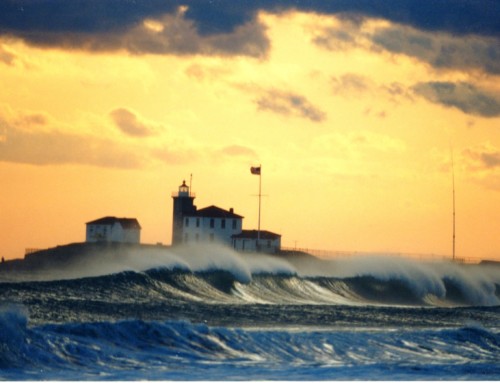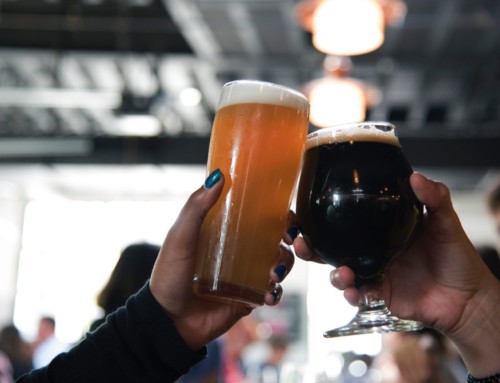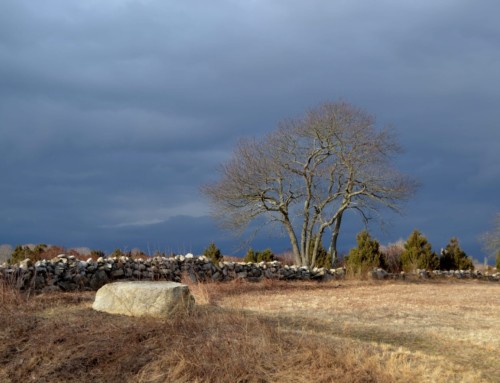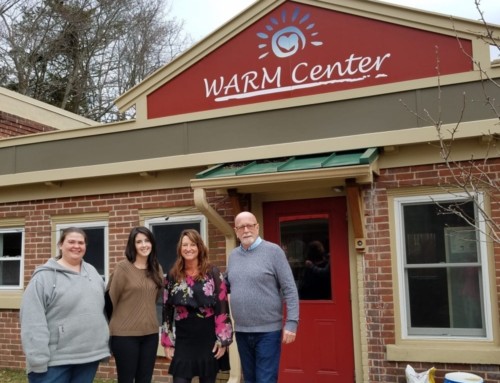In today’s Westerly, we pulled a great article from our archives. COVID has changed how we live our lives – gyms & fitness centers took a big hit, but eventually they will be back to full capacity. Be sure to check their Facebook page for all the most current information.
Since 1928, the Westerly-Pawcatuck YMCA has been bringing the community closer together. Ask any of your friends, family members, or coworkers, and chances are, a majority of them learned to swim, took a class, or played in a sports leagues at the Y. Their importance to the community is immense, and the organization is one filled with rich and noteworthy history.
While the Westerly YMCA in its current incarnation traces its roots back to 1928, the story of the YMCA in Westerly begins much earlier. On June 6, 1844, a 22-year-old London dry goods clerk named George Williams started an organization which he named the Young Men’s Christian Association.[1] Seven years later, in 1851, the first YMCA in America opened in Boston.[2]
The philosophies behind the YMCA’s ideals appealed to many in smaller communities, including Westerly, where after the Civil War, a group of local men started an organization they called a YMCA. The group established a reading room stocked with papers and magazines from their files and held daily prayer meetings and provided Sunday school services.[3] Eventually, the group’s secretary and missionary, Thomas C. Crocker, resigned and in 1876, the organization folded due to diminished funding and a lack of permanent home.[4]
While the earliest YMCA in Westerly met an unceremonious end, efforts were started once again in 1894 to form a similar group. On April 7 of that year, 37 young men gathered at First Baptist Church, where they agreed to form a ‘society for young men.’[5] They called the newly formed entity the Young Men’s Christian Association of Westerly.
Membership in the Association was limited to males over the age of 16. Active members were required to be a member in good standing of any evangelical church in town. However, associate members could be any male ‘of good moral standing.’[6] This ambitious idea was abandoned on September 7, 1894, when members determined that the funds necessary to begin could not be raised. The organization was also hindered when the Memorial Building could not provide the space for free as had been promised. Remaining funds were donated to the People’s Mission.[7] After yet another failed attempt to begin a YMCA in Westerly in 1906, the idea lay dormant for many years.
In 1918, with the country engaged in World War I, classes were held in Westerly as part of the Extension Division of the United YMCA Schools, beginning a relationship between the Association and the town.[8] Finally, a decade later, on March 7, 1928, the Westerly YMCA was incorporated as the organization that still exists today.[9]
In May 1928, the committee was elected, and D. Harold Rogers was named as the group’s first president.[10] At the second annual meeting on May 22, 1929, a gift of $10,000 from Charles Perry was announced, as was the news that women were granted the ability to become members, a relative rarity among YMCAs.[11]
While the all-important first steps in forming a local YMCA had been taken and the organization was flourishing, the need for a permanent home still loomed overhead. It was not until 1937, nine years after its formation, that the YMCA secured the property of Dr. Lewis at 95 High Street, which they purchased for $10,000.[12] Although they now owned the necessary property, it would fifteen more years before the YMCA would have a new building that served their needs. Additionally, the outbreak of World War II in 1941 led to a restriction on building supplies which would significantly slow the process of constructing a home for the YMCA.
In 1942, an agreement was reached between the board of directors and the Red Cross. According to this agreement, the Red Cross would pay one half of the taxes and all interior expenses in exchange for use of the 95 High Street building.[13] The board also voted in favor of making all vacant rooms available for use by servicemen and designated a special servicemen’s lounge.[14]
In late 1943, the building at 95 High Street was officially dedicated exclusively as a YMCA building. At the time, there was not any gymnasium in the building, and therefore, the library’s facilities were used. Shortly thereafter, the Association created a junior basketball league which had nearly ninety members.[15] As the war was drawing closer to an end, a new push for a proper building was put into motion and by July 1944, $222,700 was pledged towards this goal.[16]
July 16, 1945 marked an important day in the history of the Westerly-Pawcatuck YMCA, as this was the beginning of the day-camping program. From 1945 through the 1947 season, camp was held at Burlingame State Park. In 1948, however, the Y received a 33-acre tract of land adjacent to Burlingame, which was donated by Miss Katherine Foster.[17] Until 1960, the site was used almost exclusively for camping.[18]
In September 1950, a contract for the new YMCA headquarters was awarded to the F. Samuel Nardone Company. Shortly thereafter, the old house at 95 High Street was razed and the Y’s headquarters were moved to the Old Town Hall temporarily.[19] Throughout 1950, the YMCA offered a variety of activities, including: baseball leagues, a girls’ basketball league, Saturday morning gym classes, industrial golf leagues, a photography club, a bridge club, and painting and toleware classes, among many others.[20]
In June 1951, a cornerstone laying ceremony for the new building was held, and less than a year later, in May 1952, the YMCA’s new building was dedicated and opened to the public. At the time of the building’s opening, the Y had nearly 600 members over the age of 21.[21] This number would continue to grow over the next several years, reaching 1,250 members in total by 1955.[22]
It was only four years after the completion of the new building before another facility was deemed necessary: a swimming pool. Before the pool was completed in 1959, the nearest for YMCA use was in Norwich and New London.[23] The 1960’s saw multiple important additions to Y properties.
In 1960, the arts and crafts building was constructed at Camp Watchaug, and in 1966, the camp saw the construction of the boathouse, an important asset. That same year, expanded membership led to the opening of a parking lot, allowing more people than ever to access the Y’s growing amenities. This year was important to the history of the YMCA for another reason. In 1966, the bylaws were amended, allowing the organization to install the first female president, Grace Panciera.[24]
As the 1960’s progressed, developments continued to the YMCA’s facilities. In 1969, the Atlantic Fleet Seabees constructed a new, modern (at the time) lodge at Camp Watchaug, which helped the camp in their goals to promote interest in ecology and conservation. Renovations to the YMCA’s facilities were soon to follow, when the basement was converted to add a physical fitness center, locker rooms and shower space, as well as a sauna and lounge area.[25]
Over the years, the YMCA has also been the host of many community events, including The Westerly Library Book Fair, Radio auctions, and Antiques Shows.[26] Growth to the organization continued through the decades, and forty years after the 1973 renovations, the YMCA received a massive upgrade, as nearly $10 million dollars was invested in refurbishments providing the property with a much needed overhaul.[27]
As the YMCA celebrates 90 years of history in Westerly, let us also celebrate its importance to the community and the history that has yet to be created. The words written in the 1928 Articles of Association regarding the YMCA’s purpose: “Said corporation is constituted for the purpose of the improvement of the spiritual, mental, and physical condition of young men and of young women and of boys and girls,” remain true today.[28]
[su_accordion class=””] [su_spoiler title=”Footnotes” open=”no” style=”default” icon=”plus” anchor=”” class=””]
[1] “The YMCA, 1928-1978: A History of a Half Century of Service of the YMCA in Westerly and Vicinity” (1978), pg. 3.
[2] “The YMCA, 1928-1978: A History of a Half Century of Service of the YMCA in Westerly and Vicinity” (1978), pg. 3.
[3] “The YMCA, 1928-1978: A History of a Half Century of Service of the YMCA in Westerly and Vicinity” (1978), pg. 13.
[4] “The YMCA, 1928-1978: A History of a Half Century of Service of the YMCA in Westerly and Vicinity” (1978), pg. 13.
[5] “Y.M.C.A. Organized” Westerly Sun, 8 April 1894.
[6] “Y.M.C.A. Organized” Westerly Sun, 8 April 1894.
[7] “Y.M.C.A. Disbanded” Westerly Sun, 7 September 1894.
[8] “The YMCA, 1928-1978: A History of a Half Century of Service of the YMCA in Westerly and Vicinity” (1978), pg. 13.
[9] “The YMCA, 1928-1978: A History of a Half Century of Service of the YMCA in Westerly and Vicinity” (1978), pg. 14.
[10] “The YMCA, 1928-1978: A History of a Half Century of Service of the YMCA in Westerly and Vicinity” (1978), pg. 14.
[11] “The YMCA, 1928-1978: A History of a Half Century of Service of the YMCA in Westerly and Vicinity” (1978), pg. 14.
[12] “The YMCA, 1928-1978: A History of a Half Century of Service of the YMCA in Westerly and Vicinity” (1978), pg. 14.
[13] “The YMCA, 1928-1978: A History of a Half Century of Service of the YMCA in Westerly and Vicinity” (1978), pg. 15.
[14] “The YMCA, 1928-1978: A History of a Half Century of Service of the YMCA in Westerly and Vicinity” (1978), pg. 15.
[15] “The YMCA, 1928-1978: A History of a Half Century of Service of the YMCA in Westerly and Vicinity” (1978), pg. 16.
[16] “The YMCA, 1928-1978: A History of a Half Century of Service of the YMCA in Westerly and Vicinity” (1978), pg. 16.
[17] “The YMCA, 1928-1978: A History of a Half Century of Service of the YMCA in Westerly and Vicinity” (1978), pg. 23.
[18] “The YMCA, 1928-1978: A History of a Half Century of Service of the YMCA in Westerly and Vicinity” (1978), pg. 23.
[19] “The YMCA, 1928-1978: A History of a Half Century of Service of the YMCA in Westerly and Vicinity” (1978), pg. 17.
[20] “The YMCA, 1928-1978: A History of a Half Century of Service of the YMCA in Westerly and Vicinity” (1978), pg. 17.
[21] “The YMCA, 1928-1978: A History of a Half Century of Service of the YMCA in Westerly and Vicinity” (1978), pg. 17.
[22] “The YMCA, 1928-1978: A History of a Half Century of Service of the YMCA in Westerly and Vicinity” (1978), pg. 19.
[23] “The YMCA, 1928-1978: A History of a Half Century of Service of the YMCA in Westerly and Vicinity” (1978), pg. 19.
[24] Obituary of Grace Panciera, Westerly Sun, 7 March 2001.
[25] “The YMCA, 1928-1978: A History of a Half Century of Service of the YMCA in Westerly and Vicinity” (1978), pg. 20.
[26] Advertisements, Hartford Courant, 26 May 1988, 4 April 1972, and 14 June 2000.
[27] Lavin, Nancy, “Renovated YMCA is ‘bright and new’” Westerly Sun, 7 September 2013.
[28] “The YMCA, 1928-1978: A History of a Half Century of Service of the YMCA in Westerly and Vicinity” (1978), pg. 11.
[/su_spoiler] [/su_accordion]






